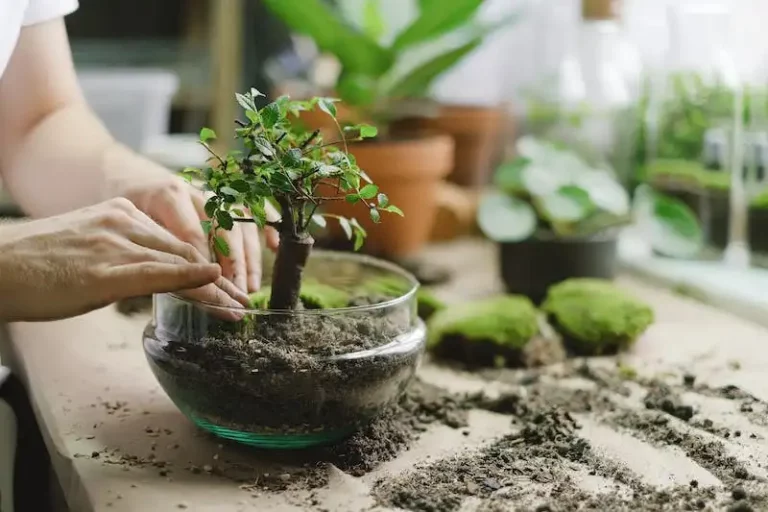Pruning blackcurrant bushes is an important step in maintaining healthy and productive plants. Blackcurrant bushes can grow quite large if left unpruned, resulting in a subsequent decrease in fruit yield. Pruning helps to keep the bushes manageable, encourages new growth, and improves air circulation and sunlight penetration, which is essential for the development of healthy leaves and fruits.
The best time to prune blackcurrant bushes is during the dormant period, usually in late winter or early spring. During this time, the leaves have fallen off and the plants are not actively growing. Pruning during this period can be easier as the plant structure is more visible, and the risk of spreading diseases and pests is minimized.
When pruning blackcurrant bushes, the first step is to remove any dead or damaged wood. This includes cutting back any branches that are crossing or rubbing against each other. The next step is to thin out the remaining branches, leaving only about five to ten strong and healthy ones. This will allow more sunlight to reach the center of the bush and promote better fruiting.
Having chosen the main branches, it’s important to cut them back to an outward-facing bud. The cut should be made at a downward angle, just above the bud. This will encourage new shoots to grow outwards, rather than crowding towards the center of the bush. It’s also a good idea to prune the leader branch, which is the main stem of the bush, so that it is level with the other branches. This will help maintain a balanced and compact shape.
After pruning, it’s a good idea to apply a layer of mulch around the base of the blackcurrant bushes. This will help retain moisture and suppress weeds. Remember to water the bushes well after pruning, especially if it hasn’t rained recently. Young bushes may need to be staked until the rootball has firmly established itself in the ground. This will prevent them from toppling over in strong winds.
One common problem that blackcurrant bushes may face is frost damage. Blackcurrants are hardy plants, but they can sometimes suffer from late frosts, especially in cold conditions. If frost is forecasted during the flowering period, covering the bushes with a large sheet or fleece can help protect the flowers and prevent frost damage. Similarly, if a late frost is expected after the buds have started to open, using ground-brushing or watering the bushes can help keep the frost at bay.
In general, blackcurrants are relatively low-maintenance plants. However, there are a few additional tips to keep in mind. It’s a good idea to check the bushes regularly for signs of pests or diseases, such as aphids or powdery mildew. If any issues are spotted, appropriate measures should be taken to prevent the problem from spreading. Additionally, blackcurrants are attractive to bees, so planting flowers nearby can help attract these beneficial pollinators and ensure good fruit set.
In summary, pruning blackcurrant bushes is a vital practice that helps maintain their health and productivity. By following the correct pruning method, the bushes can be kept in a compact shape, with good air circulation and sunlight penetration. This, in turn, leads to better leaf and fruit development. Remember to prune during the dormant period, remove dead or damaged wood, thin out the branches, and make clean and angled cuts. With proper pruning and care, blackcurrant bushes can thrive and provide abundant crops of delicious berries.
Better berries how to prune red white and black currants
Pruning currant bushes, including red, white, and black currants, is an essential skill for any gardener looking to grow better berries. Proper pruning helps maintain the health and vigor of the plants, promotes better airflow and sunlight penetration, and enhances fruit production.
Before diving into the pruning process, it’s important to identify the type of currant bushes you have. Red, white, and black currants all have different growth habits and pruning requirements, so knowing how to distinguish between them will help guide your pruning decisions.
When it comes to pruning currant bushes, timing is crucial. The best time to prune is in late winter or early spring, before new growth starts. Start by cutting back any dead or diseased wood. Then, focus on removing any branches that are crossing or rubbing against each other.
For blackcurrant bushes, it’s recommended to remove any weak, thin, or spindly shoots to promote healthier growth. Blackcurrants tend to have larger and more vigorous growth, so it’s important to keep them in check by thinning out the canes and creating an open and airy structure.
White currants, on the other hand, are more delicate and require a lighter touch. The pruning approach for white currants is similar to that for black currants, but with a focus on maintaining a more compact and manageable size. Remove any overcrowded or long, trailing branches, and aim for a vase-like shape.
When pruning red currant bushes, it’s important to strike a balance between removing old wood and encouraging new growth. Remove any broken or damaged branches, as well as any branches that are growing too thick and crowded. The goal is to create an open and airy plant structure that allows for easy harvesting of the fruits.
Regardless of the type of currant bush you are pruning, always remember to clean your pruning tools between cuts to prevent the spread of diseases. A simple solution of water and household bleach can be used to disinfect your tools.
After pruning, give your currant bushes a hearty fertiliser to provide them with the necessary nutrients for the upcoming growing season. Mulching around the base of the plants can also help retain moisture and suppress weed growth.
By following these pruning guidelines, you can ensure healthier and more productive currant bushes, leading to better berry crops. If you need further guidance, consult a reliable gardening guide or seek advice from experienced growers in your area.
Red & White Currants
Red and white currants belong to the same family as blackcurrants and are often grown alongside them in gardens. These currant bushes are known for their small, round fruits that are packed with flavor. Pruning red and white currants is similar to pruning blackcurrants, but there are a few key differences to keep in mind.
When pruning red and white currants, it’s important to remember that these bushes tend to grow much larger than blackcurrant bushes. As a result, they require more space and attention. One method for growing these bushes is to train them as cordons or single-stemmed leaders. This involves pruning off all but one main stem, allowing the plant to grow upward and produce fruits along the length of the stem.
Before planting red or white currant bushes, make sure to choose a sunny spot in your yard or garden. These varieties thrive in full sunlight and are more likely to produce an abundant crop in these conditions. It’s also important to choose a well-drained location, as currant bushes don’t tolerate overly wet soil.
Aftercare is an important step in the growth of red and white currant bushes. Regular feeding with a balanced fertiliser, thorough watering during dry spells, and pruning are all essential to ensure healthy growth and a bountiful harvest. Pruning should be done in late winter or early spring, when the bushes are dormant. This will help stimulate new growth and ensure that the fruits receive ample sunlight and airflow.
When pruning red and white currant bushes, start by removing any dead, damaged, or weak branches. Then, thin out the remaining branches to allow for better air circulation and light penetration. Remove any branches that are crossing or rubbing against each other. Finally, prune back the remaining branches to an outward-facing bud to encourage a nice open shape and facilitate fruiting.
Red and white currant bushes can be grown in containers, which can make pruning and aftercare easier. Make sure to choose a container that is large enough for the roots to grow freely and has drainage holes to prevent waterlogged soil. Use a good quality potting mix and regularly water and feed the plants during the growing seasons.
In conclusion, red and white currants are popular varieties of currant bushes that produce delicious fruits. Pruning and aftercare are important steps for ensuring their health and productivity. By following the proper pruning techniques and providing the necessary care, you can enjoy a bountiful harvest of red and white currants.
Black currants
Black currants are a hearty and flavorful berry that is typically grown in winter conditions. They are known for their rich, dark color and sweet-tart taste. Black currants are a popular fruit to grow in home gardens, as they are relatively easy to care for and produce a high yield.
When choosing black currant plants, look for healthy young stems with thick leaves. This is a good indication that the plant is in good health and will likely produce a bountiful harvest. You can also choose from different varieties of black currants, such as ‘Renee’ or ‘Jostaberry’, depending on your personal preference.
Black currant bushes should be planted in early winter, when they are dormant. This will give them time to establish their root system before the growing season begins. The bushes should be spaced apart to allow for adequate airflow and sunlight, typically about 1.5m (5ft) apart. To ensure proper growth, it is recommended to stake the plants to keep them upright and prevent them from breaking under the weight of the fruit.
Black currants prefer well-draining soil with a pH level between 6.0 and 6.5. If your soil is not up to these standards, it is recommended to amend it with extra organic matter, such as compost or well-rotted manure. This will provide the plants with the necessary nutrients and help retain moisture in the soil. Additionally, black currants require regular feeding, once in spring and once after the harvest, with a balanced fertilizer like Growmore.
Pruning black currant bushes is an important part of their aftercare. This should be done in late winter or early spring, before new growth begins. The goal is to remove any damaged or broken stems and create an open vase shape, allowing sunlight and air to reach the center of the bush. Pruning also helps to promote new growth and improve the overall health of the plant.
Black currants are prone to certain diseases, such as powdery mildew. To prevent this, it is important to keep the plants well-spaced and provide adequate air circulation. Thoroughly inspect the plants regularly and remove any infected leaves or stems. If mildew becomes a recurring problem, you can treat the plants with a fungicide.
Harvesting black currants should be done when the fruit is fully ripe. This is typically in mid-summer, around July. The berries should be plump and slightly soft to the touch. Gently pull the bunches of blackcurrants off the stems by hand, being careful not to damage the plant. Black currants can be eaten fresh or used in a variety of recipes, such as jams, pies, and sauces.
Overall, black currants are a wonderful fruit to grow in your home garden. With the right care and attention, they can provide you with a bountiful harvest of delicious berries year after year.




